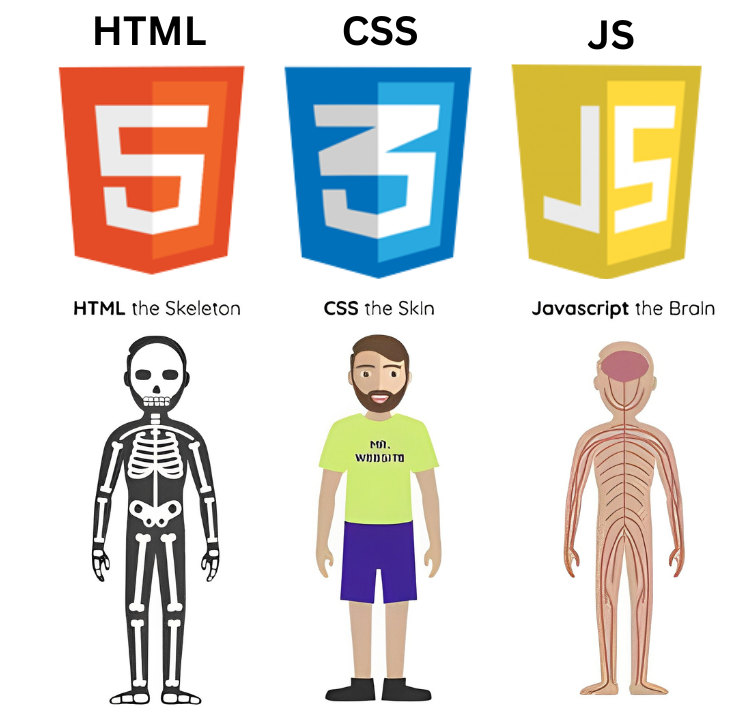HTML JavaScript
JavaScript makes HTML pages more dynamic and interactive.
<script> Tag
The HTML <script> tag is used to define a client-side script (JavaScript).
The <script> element either contains script statements, or it points to an external script file through the src attribute.
Common uses for JavaScript are image manipulation, form validation, and dynamic changes of content.
To select an HTML element, JavaScript most often uses the document.getElementById() method.
This JavaScript example writes "Hello JavaScript!" into an HTML element with id="demo":
<script>
document.getElementById("demo").innerHTML = "Hello JavaScript!";
</script>Tip: You can learn much more about JavaScript in our JavaScript Tutorial.
A Taste of JavaScript
Here are some examples of what JavaScript can do:
JavaScript can change content:
document.getElementById("demo").innerHTML = "Hello JavaScript!";JavaScript can change styles:
document.getElementById("demo").style.fontSize = "25px";
document.getElementById("demo").style.color = "red";
document.getElementById("demo").style.backgroundColor = "yellow";JavaScript can change attributes:
document.getElementById("image").src = "picture.gif";<noscript> Tag
The HTML <noscript> tag defines an alternate content to be displayed to users that have disabled scripts in their browser or have a browser that doesn't support scripts:
<script>
document.getElementById("demo").innerHTML = "Hello JavaScript!";
</script>
<noscript>Sorry, your browser does not support JavaScript!</noscript>Takeaway...
JavaScript is a high-level, dynamic programming language primarily used for enhancing the interactivity and functionality of web pages. It is one of the core technologies of the World Wide Web, alongside HTML and CSS.
Importance of JavaScript for HTML
-
Interactivity: JavaScript allows you to create interactive elements on your web pages, such as drop-down menus, modal windows, and form validations. It makes the user experience more dynamic and engaging.
-
Client-Side Scripting: JavaScript runs on the client's browser, reducing server load and improving the speed and performance of web applications. It can handle tasks like input validation, animations, and dynamic content updates without the need for server-side processing.
-
DOM Manipulation: The Document Object Model (DOM) represents the structure of an HTML document. JavaScript can interact with the DOM to dynamically change content, styles, and structure of the web page. This capability allows for real-time updates and modifications to the web page without requiring a page reload.
-
Event Handling: JavaScript can respond to user events such as clicks, key presses, and mouse movements. This allows developers to create responsive and interactive web applications that react to user input.
-
Enhanced User Experience: By providing real-time feedback and updates, JavaScript improves the overall user experience. Features like live form validation, interactive maps, and content sliders enhance the usability of a website.
-
Asynchronous Communication: JavaScript, particularly with technologies like AJAX (Asynchronous JavaScript and XML), enables asynchronous communication with servers. This means data can be fetched or sent in the background without reloading the entire web page, providing a smoother and faster user experience.
-
Extensive Ecosystem: JavaScript has a vast ecosystem of libraries and frameworks (such as React, Angular, and Vue) that simplify the development process and enhance the functionality of web applications. These tools help developers build complex applications efficiently.
Example
Here’s a simple example of how JavaScript can enhance HTML:
<!DOCTYPE html>
<html>
<head>
<title>JavaScript Example</title>
</head>
<body>
<p id="demo">Click the button to change this text.</p>
<button onclick="changeText()">Click Me</button>
<script>
function changeText() {
document.getElementById("demo").innerHTML = "Hello, JavaScript!";
}
</script>
</body>
</html>
In this example:
- The HTML provides the structure of the page.
- JavaScript is used to change the text inside the
<p>element when the button is clicked.
JavaScript is essential for modern web development, transforming static HTML pages into dynamic, interactive web applications.
